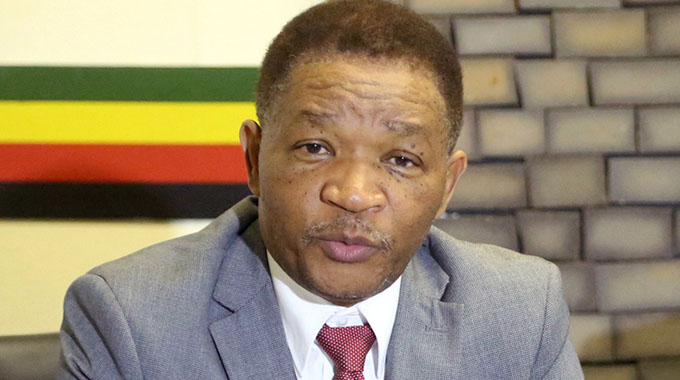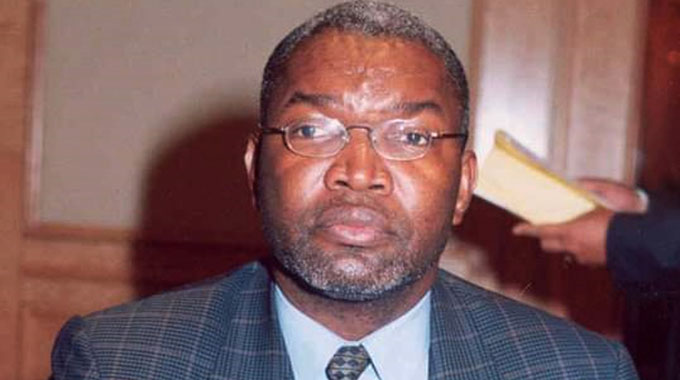Transport catalyst to economic development

Transport is part of and is a catalyst to economic development. As such, its developmental strides are also dependent on the development of other sectors that use transportation such as industry, agriculture and tourism. For the transport sector to function efficiently and effectively there is need to also consider relevant soft infrastructure such as policies and legal instruments that govern the transport sector.
The Ministry of Transport is responsible for the development of transport infrastructure and services and the provision of policy direction in the transport sector.
Transport and Infrastructural Development Minister is Honourable Arch Joel Biggie Matiza. The Permanent Secretary is Engineer Amos Marawa.
Mandate
Vision: To be regional hub for world-class transport networks, logistics and services by the year 2030.
Mission: To develop integrated transport infrastructure networks and services that facilitate smooth, safe and secure movement of goods, services and persons.
Policy and regulation
To formulate national transport and infrastructure policies;
To regulate and monitor inland water activities in line with national and international maritime standards on all declared inland water bodies;
To regulate and monitor of the aviation sector;
To supervise, administer and control relevant national and international regulations, treaties and protocols of all aspects of the transport sector.
Infrastructure provision
To plan, design, construct and maintain state roads and bridges.
To plan, construct, operate and maintain the railway network and infrastructure in compliance with relevant national and international standards.
To plan, construct, operate and maintain air transport infrastructure and services in compliance with national and international aviation standards.
Service provision
To provide and manage services that ensure safety of road, rail, air and inland water traffic.
To provide freight and passenger transport services.
To provide, operate and maintain transport and equipment services.
Historical developments
Between the period 1980 and 1990, Government undertook to correct socio-economic developmental imbalances created by colonialism. In line with this philosophy, the national policy initiative dubbed “Growth with Equity” was enshrined in the Transitional National Development Plan and the First and Second Five Year National Development Plans. Such a policy initiative was meant to redress the historical imbalances and to promote equitable distribution of resources, especially in rural areas.
Since the transport sector was deemed key to economic growth and development, Government up-scaled the provision of transport infrastructure and services in order to influence policy directions and ensure that interventions were in line with national, economic and development objectives.
To enhance Government control and ownership, Government continued to assist in meeting the funding requirements of relevant parastatals such as Air Zimbabwe, Civil Aviation Authority of Zimbabwe (CAAZ) and the National Railways of Zimbabwe (NRZ). It also regulated fares or tariffs and made an undertaking to pay subsidies or meet shortfalls in the event that parastatals made deficits.
In addition, Government provided guarantees for loans to enable transport parastatals to invest in infrastructure and rolling stock in order to enhance their capacity to enable them to meet the demand for transport services. The interventions were meant to ensure equitable utilisation of resources and enhance affordability of transport services.

Minister Matiza
Realising the importance of transport in economic growth and development, Government with the assistance of the Swedish International Development Agency (SIDA), commissioned the National Transport Study in 1984/85. The study, among other things, recommended the need to promote infrastructural investments in the road, civil aviation and railways sub-sectors to enable the Government to achieve the objectives of “Growth with Equity” policy. It also highlighted the need to formulate a National Transport Policy to guide interventions in the transport sector.
Between 1990 and 2000, Government adopted two economic reform programmes; the Economic Structural Adjustment Programme (ESAP) and the Zimbabwe Programme for Economic and Social Transformation (ZIMPREST), which emphasised deregulation and increased private sector participation.
Due to increasing demand for public passenger transport services, competing priorities and growing budgetary constraints, Government realised that it could not continue to own and finance investment in transport infrastructure and services. Competition rather than control was seen as a better alternative in solving transport woes.
The deregulation and/or liberalisation of the transport sector in the early 1990s included ending of the Zimbabwe United Passenger Company (ZUPCO)’s urban public transportation monopoly in 1993, which facilitated the entry into the transport market of mainly indigenous entrepreneurs through the introduction of commuter bus services. In the road freight transport industry, the enactment of the Road Motor Transportation Act of 1997 liberalised entry into the sector and nature of goods to be carried and this led to phenomenal growth in the sector.
Despite the gains that have been made in the liberalisation of the transport sector, the sector still faces serious challenges related mostly to the macroeconomic situation. For example, due to high interest rates and liquidity challenges, it became increasingly difficult for most companies to embark on fleet renewal and expansion programmes. This threatens the long-term viability and sustainability of the transport sector. If allowed to go unchecked, it will adversely affect the growth of other key sectors of the economy such as agriculture, mining, tourism, manufacturing and commerce, which contribute significantly to the country’s Gross Domestic Product (GDP).
The purchase prices of aircraft, haulage trucks and buses sky-rocketed to levels beyond the reach of many operators. This has led, for example, to urban transport operators procuring second hand fleets from overseas suppliers. Most of these vehicles have a short life span and are expensive to maintain, thereby increasing transport costs.
In regional developments, the Government, through the Ministry of Transport and Infrastructural Development took a major stride and sought to align Zimbabwe with:
The Southern African Development Community (SADC) Protocol on Transport, Communication and Meteorology (1997);
Common Market for Eastern and Southern Africa (COMESA), Transport Policy Framework and Strategies;
African Union (AU) Protocol on Transport, Communications and Tourism; and
Transport initiatives by international bodies such as the United Nations Conference on Trade and Development (UNCTAD) and International Civil Aviation Organisation (ICAO).
Due the challenges associated with transport projects such as financing, Government adopted the Public Private Partnership model for funding of its projects.
The following are notable developments in the transport sector:
Rail
In 1983, Government approved and launched the electrification of the busy railway mainline, a distance of 305km between Harare and Dabuka marshalling yard near Gweru in the heart of the industrial Midlands. The inaugural train ran on October 22, 1983 after the remarkable successful electrification programme was completed in a time scale of two years.
In 1987, the NRZ relinquished ownership of the Botswana section of the railway line and this gave rise to the formation of a separate entity — Botswana Railways.
In September 1992, the Government acquired the Diesel Electric (DE) 11 class of locomotives, thereby boosting the main line fleet and enabling the NRZ to cope with greatly increased traffic volumes. Following the acquisition of DE 11 locomotives, steam locomotives were withdrawn from mainline operations in July 1993, but a small number was retained for use on special ‘steam safari’ services.
In 1996, the Government of Zimbabwe awarded a BOT concession to New Limpopo Projects Investments Ltd (NLPI), which saw the construction of a new link between West Nicholson where NRZ’s network ended to Beitbridge, thereby providing a more direct rail link between Beitbridge at the border with South Africa and Zimbabwe’s second largest city of Bulawayo. NLPI incorporated a Zimbabwean registered company, Beitbridge Bulawayo Railway Ltd to operate the new link all the way to Bulawayo. The NLPI BOT concession line was inaugurated on July 15, 1999.
In 1997, Government approved the deregulation of the transport industry which allowed NRZ to operate as a commercial entity while competing with other players in the transport industry.
A new-look fleet of passenger coaches equipped with state-of-the-art equipment were acquired in 1998 to replace the brown ones plying on the Bulawayo-Harare and Harare-Mutare routes.
In 2001, in a bid to address the social imbalance caused by sanctions, Government through National Railways of Zimbabwe introduced an urban commuter train service (commonly known as Freedom Trains) in Harare and Bulawayo to cushion urban commuters from rising transport costs. In Bulawayo the commuter train service was introduced along the Luveve and Emganwini routes while in Harare they plied the Marimba, Dzivaresekwa and Ruwa routes.
NRZ experienced its worst year in 2003 when the entity faced a couple of train disasters leading to one of them being declared a national disaster (Dete train disaster). The other one was the Dibangombe disaster.
The Bulawayo-Francistown passenger train service was reintroduced on May 19, 2006.
In 2016, the NRZ received wagons procured from China.
Government continues to push for the recapitalisation of NRZ as this will boost the economic performance of the country.
Aviation
There are over 200 airports and aerodromes spread across the country. The CAAZ owns and manages eight airports in Zimbabwe such as Robert Gabriel Mugabe International Airport, Joshua Mqabuko Nkomo International Airport and Victoria Falls International Airport. The following are some of the achievements to date in the aviation sector:
In 1980, Air Zimbabwe was established under Air Zimbabwe Corporation Act (Chapter 253) of 1980. The new airline took over from Rhodesia Airways which had been established in 1967.
In 1999, the Government of Zimbabwe established the Civil Aviation Authority of Zimbabwe (CAAZ) through the Civil Aviation Act of 1998. The CAAZ is the main provider of civil aviation services, serving as the regulator of the industry, managing the civil aviation infrastructure, including the main eight national airports, and providing airspace management services.
During 1982, a service to Perth and Sydney commenced; it was run in cooperation between Air Zimbabwe and Qantas, flown with Qantas Boeing 747SP aircraft.
In 1982, the Government directed Air Zimbabwe and the national freighter airline Affretair to merge their operations. The freighter company was eventually taken over by Air Zimbabwe in July 1983.
During 1983, Air Zimbabwe became a member of the International Air Transport Association (IATA). It also extended its regional routes to Gaborone, Lilongwe, Lusaka and Nairobi.
In 1986, Air Zimbabwe acquired the first of three owned Boeing 737-200s which was phased in and put into service in December that year; the second and third aircraft of the type were delivered in June and July 1987.
In 1989, Air Zimbabwe placed an order for two Boeing 767-200s. With registration Z-WPE and named “Victoria Falls”, the first Boeing 767-200ER entered the fleet in November 1989. The Boeing 707 was retired from serving long-haul routes shortly afterwards; these aircraft were still used to cover regional routes. The Viscount was definitely withdrawn from service in November 1989. The airline phased in the second 767-200ER (Z-WPF, named “Chimanimani”) in the fall of 1990.
In 2000s, due to the economic challenges and the increasing inflation, more than twenty scheduled airlines discontinued services in Zimbabwe, including major carriers such as Air France (1997), KLM (1998), Lufthansa (2000), Swiss Air (2000), and British Airways (2007). Air Zimbabwe was also affected by the high inflation, and operating costs it was forced to suspend some of its routes, particularly into Europe.

Permanent Secretary Marawa
Other notable developments
1. Joshua Mqabuko Nkomo International Airport
The phase 1 of the airport expansion and upgrade project was completed and commissioned in 2013 and CAAZ is currently working on phase two whose total cost is pegged at US$13 million and entails:
Construction of the Air Traffic Control (ATC) Tower;
Construction of a Fire Station; and
Dualisation of the access road.
2. Victoria Falls International Airport expansion project
The $150 million airport expansion project was commissioned in 2016 at Victoria Falls International Airport. The project was funded (through a loan) from China’s Export-Import Bank.
3. Robert Gabriel Mugabe International Airport expansion project
The project commenced in 2018 and works are currently ongoing. The three year US$153 million project is being funded through a China Exim Bank loan.
Expansion of the International Terminal Building to increase capacity from 2,5 million to six million passengers per annum;
Construction of a VVIP Pavilion with associated facilities;
Refurbishment of existing international and domestic terminal building and fire stations; and
Rehabilitation of the runway.
Policy and regulation
CAAZ
Government took a decision to unbundle the Civil Aviation Authority of Zimbabwe. In 2018, the Civil Aviation (Amendment Act) No 10 of 2018 was promulgated in July 2018 to usher in the unbundling of the entity in line with ICAO recommendations and best practices. The Act splits the Airports Management Company from the Civil Aviation Authority. The process of unbundling is underway and now at advanced stages.
Air Zimbabwe
Pursuant to the challenges facing Air Zimbabwe, Government proposed a Turnaround Strategy which saw the airline implementing various reforms, including restructuring of its operations, clearing of balance sheet and seeking a partner. Government appointed an Administrator to oversee the implementation of the Turnaround Strategy. The aim is to make the airline viable and competitive in the region. Part of Government’s vision is to make Zimbabwe an aviation hub and Air Zimbabwe is a key player.
The Airline industry
(a) Domestic
Zimbabwe currently has two players, Air Zimbabwe and FastJet Zimbabwe operating in the domestic and regional air space.
(b) Regional and international airlines flying into Zimbabwe:
Following developments in the regional and international airspace, Government adopted the Yamoussoukro Decision and has liberalised the air space on a case-by-case basis. To this end, some airlines such as Emirates Airlines, TAAG Angola, Ethiopian Airlines, Malawian Airlines, Kenya Airways, RwandAir and South African Airways have direct and connecting flights into Zimbabwe’s major airports.
Roads
Road infrastructure in Zimbabwe is managed and coordinated by the Ministry of Transport and Infrastructural Development. There are 88 100km of classified roads in Zimbabwe, 17 400km of which are paved. About five percent of the network is classified as primary roads and has some of the most trafficked arterials that link Zimbabwe with its neighbours. A portion of the Pan-Africa Highway and the North South Corridor (NSC) passes through Zimbabwe. This part of the road network plays a major role in the movement of the country’s imports and exports as well as transit freight.
Over the years, emphasis was placed on funding through the Public Sector Investment Programme (PSIP) the expansion of access and feeder roads to and from rural areas to facilitate their development.
These roads are, however, grossly inadequate and where they exist, become unusable during the wet seasons due to poor maintenance, thus hindering socio-economic development of rural areas. Emphasis was also placed on the maintenance of highways through the PSIP.
However, due to competing priorities, the allocation of funds for road construction and maintenance through the PSIP has been steadily declining in real terms over the years. As part of Government attempts to ensure the preservation of the road network and improve the financing and management of the road infrastructure, institutional reforms were initiated, which in part lead to the establishment of the Zimbabwe National Road Administration (ZINARA).
The development of the road network was a significant contributor to the growth of a modern economy in Zimbabwe. Research and field experience carried out by the Ministry of Transport and Infrastructural Development resulted in road design standards and construction methods that are based on international standards, yet adapted for local conditions. These are some of the achievements in the Roads sector:
In 1981, Government established the District Development Fund (DDF) to handle the development agenda in rural areas by supporting the development of communal, resettlement, and small-scale commercial farming areas.
In 1996, Zimbabwe being a Member of the Southern African Development Community (SADC), signed the Protocol on Transport, Communications, and Meteorology (1996). This realigned the management and financing of road and road transport sector and set to harmonise key standards on vehicles and road infrastructure.
In 2001, following the reforms required to finance the roads infrastructure in the country, the Government promulgated the Roads Act (13:18) for the management and financing of road infrastructure. Road Authorities were established under the Act. These are Department of Roads, DDF, Rural Development Councils (RDCs) and Urban Development Councils (UDCs).
In 2002, the Government created the Zimbabwe National Roads Administration (ZINARA) through the Roads Act, whose mandate was to collect funds to be disbursed to the Road Authorities for the construction and maintenance of road infrastructure in the country. This saw the establishment of various road tolling points established across the country.
In 2007, Government adopted, ratified and domesticated the harmonised standards and procedures currently being implemented in the road infrastructure and services sector. To date Government participates in SADC Trade in Services and in Trade Facilitation in line with the adopted standards.
In 2010, Government, together with other Member States, signed the Decade of Action for Road Safety 2011-2020 action plan, a tool that has guided Government in the fight against road crashes, injuries and fatalities.
During the 2015 to 2019 period, the country has experienced drastic effects of climate change with droughts and heavy rainfall that resulted in the destruction of property and infrastructure. Most recently, Government moved in to address the damages caused by Cyclone Idai, where the cyclone washed away bridges and roads in Chimanimani and Chipinge areas. This impacted heavily on the Government’s reserves and prioritised projects.
The adoption of the Public Private Partnership framework in the implementation of major projects in the transport sector has assisted in the rehabilitation and construction of road transport infrastructure in the country. This includes projects such as the Victoria Falls International Airport, the Plumtree-Mutare Road Rehabilitation Project and the current works on the Beitbridge Border Post Upgrade Project and the Beitbridge-Harare-Chirundu Road Rehabilitation and Dualisation Project.
In line promoting local investment, the Government engaged five private contractors to carry out work on the Beitbridge-Harare Highway. In addition, in response to the heavy rains, the ministry is working on emergency works across the country, however, there are financing challenges that are slowing down progress.
The Government is aware of the challenges faced by ordinary commuters along our roads. Because of scarce resources, rehabilitation of most of our infrastructure has been difficult; however, the Government is working towards resuscitating them through the involvement of the private sector.
Rail transport sector to date
In the rail sector, due to challenges in the implementation of the NRZ Recapitalisation Programme, the deal with the DIDG/Transnet Consortium was cancelled by Government. Government will continue the process to secure a strategic partner for the NRZ. Government shall continue to engage and consult all relevant stakeholders, including industry and mining to support the Government in its efforts to revive NRZ. It is anticipated that strategic partner will ensure that NRZ fast tracks the rehabilitation and upgrading of rail infrastructure, with priority works on rail networks and signalling.
Road motor transportation
For registration of public service vehicles, the Ministry of Transport and Infrastructural Development has managed to decentralise its offices to the remaining provinces. These are Mashonaland East, Mashonaland Central, Matabeleland South and Matabeleland North. This is in line with the framework on Ease of Doing Business and decentralisation. In addition to the promotion of safety, this will also make it easier for the public service vehicles to be registered.











Comments